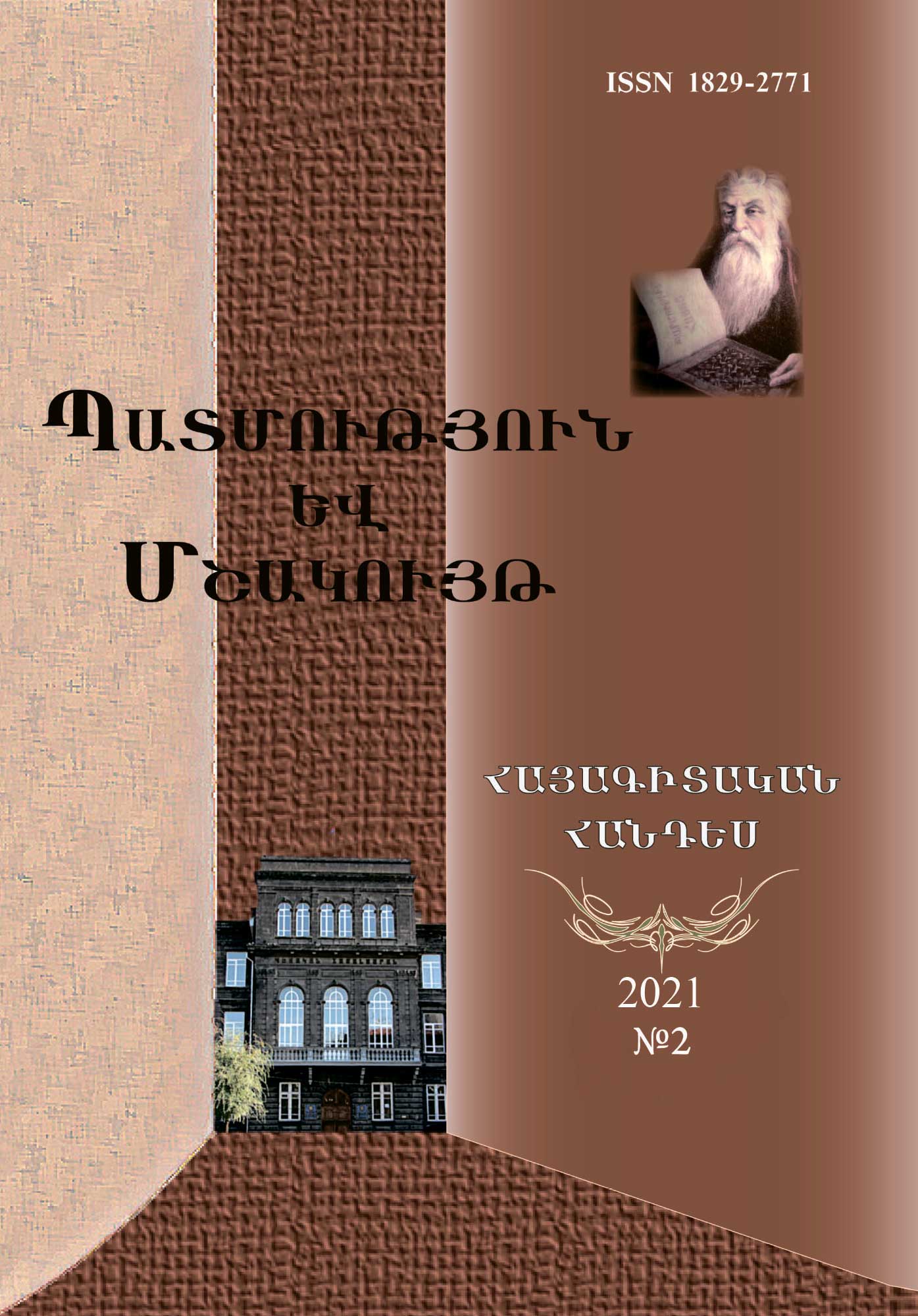Interethnic Developments and the Entente States in Transcaucasia after the October 1917 Revolution
Keywords:
Transcaucasia, October Revolution, Armenia, Entente, Turkish-Armenian war, demarcation, Georgia, capitulation, Allies, Kemalist TurkeyAbstract
Until 1917, the national-political parties did not raise the strategic question of state autonomy and independence in terms of political perspective by any national-political force of Transcaucasia, but only the acquisition of broad autonomy within the Russian Empire. There were similar programs in Western Armenia in the form of ARF projects. It was not a national priority for the political forces of Transcaucasia, which was due to the geopolitical situation and was dictated by it.
Until 1917, there was a similar concept in Transcaucasia among the Georgian socialist-federalists, which was annulled by the declaration of Georgia's independence, giving rise to the promotion of nationalist-state programs. From the point of view of ideological and political perspective, the fundamental provision on the right of nations to self-determination proposed by V. Lenin, which even if it had electoral elements, played an activating role for the Transcaucasian parties. Nevertheless, it was acceptable for both the national periphery and the nationalist forces created there, and in particular for the National Democrats led by Ilya Chavchavadze, although in practice it solved another global problem - the collapse of the Russian superpower, which was another good opportunity for Germany, which lost the war. It was also a good opportunity to bring the enemy countries closer and to choose a new political perspective. In fact, the idea of the process of creating one's own statehood became relevant.
From the point of view of revealing these perspectives, some Georgian political nominations, "political notes" on the national issue are remarkable, in which the conceptual bases of the demarcation of the territorial borders of the Caucasus states are presented, with which the nationalist circles of the Georgian society agreed. In them, the "principle of real allocation" was sharply and purposefully criticized, under the protection of which the Armenian side stood in the position of that principle of territorial demarcation, which led to the borders being drawn on the basis of the national composition of the population.
It should be noted that these issues were important from the moment when the issue of expulsion of Armenians from Turkey became on the agenda from the first divisions of Armenia, and in particular from the administrative divisions undertaken by Justinian I and the strategy of destroying the Armenian ministerial dynasty. All this was followed by the Arabs, whose further manifestation was the donation of the Armenian kingdom of Ani by Hovh․ Smbat to the emperors of the Macedonian dynasty of Armenian descent in Byzantium, after which the Turkish period began. This stage of history was the most brutal, during which the Turkish authorities, with their constant kidnapping of young ladies, girls and children, their policy of depriving Armenians of conscription and the destruction of potential troops, Kurdishization and other anti-Armenian actions, at the same time they expelled Armenians from the plains to the mountains, and already taking advantage of the Russian-Turkish wars, the Turkish ethnos inadvertently "contributed" to the movement of Armenians from Western Armenia to the Caucasus Mountains.
The rapid disintegration of the Caucasian front in the days of the October 1917 coup and the unprecedented unleashing of Turkish-Muslim aggression and expansion into the Caucasus Mountains on the background of the Armenian population fleeing the settlements of Western Armenia. One of the most striking examples of this situation was the events in Shamkhor in 1918, which some Russian scholars and advisers even presented as a fact when "a group of Muslims attacked a fleet full of soldiers, seizing their weapons and then killing several hundred "defenseless Russians". The number actually reached several thousand. Some even describe these events as the "death penalty".
According to various publicists, especially in Georgia, believed that the issue of delimitation of the Caucasus states should be based on three principles: economic, ethnographic and historical. According to these views, only Georgians and Azeris, who lived in large numbers within their states, had enough space to form a de facto independent state. To the regret of the Armenians, this form of settlement has given rise to many disputes and the Armenian territory can be created only if all disputes are resolved in favor of the Armenians, omitting both economic and historical beginnings, and if the population of the respective states is not questioned. In any case, the interests of other nations living in those states will be violated.
The Republic of Armenia already seemed to have a reliable sponsor (represented by the British), from whom diplomatic and military support was expected. However, it can be said that the Armenian side had high unjustified hopes for the help expected from the victorious states in favor of resolving the issue of Armenia's borders and sovereignty, in which the allies instilled false hopes in the friendly Armenian people, which conditioned Armenia's failures in foreign policy. Particularly in foreign policy calculations and sampling, which was facilitated by the Allied paper-declarative statements.
Downloads
Published
Issue
Section
License
Copyright (c) 2021 Vanik Virabyan

This work is licensed under a Creative Commons Attribution-NonCommercial-ShareAlike 4.0 International License.

